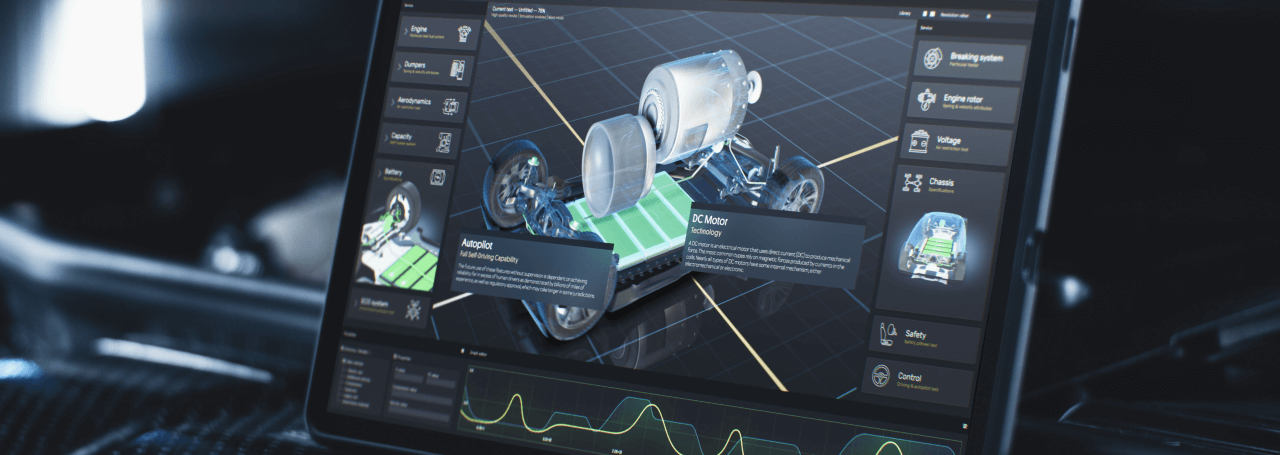- 1. Exploring the Advancements in Transparent OLED Display Technology
- 2. How Transparent OLED Displays are Revolutionizing the Tech Industry
- The Role of Transparent OLED Displays in Future Smart Devices
- Understanding the Manufacturing Process of Transparent OLED Displays
- 5. The Potential Applications of Transparent OLED Displays in Various Sectors
- 6. Challenges and Solutions in the Production of Transparent OLED Displays
- 7. Predicting the Market Growth of Transparent OLED Displays in the Coming Years
- Frequently Asked Questions
- What makes Transparent OLED Displays different from traditional displays?
- What are the main advantages of using Transparent OLED Displays in smart devices?
- What sectors could benefit the most from the application of Transparent OLED Displays?
- What are the main challenges in the production of Transparent OLED Displays?
- What is the predicted market growth for Transparent OLED Displays in the future?
Technology is anything that wasn’t around when you were born. – Alan Kay. This quote perfectly encapsulates the rapid evolution of technology, especially in the realm of display technology. The future of this industry is being shaped by innovations like Transparent OLED Displays, a groundbreaking development that is set to revolutionize the tech world. This article delves into the intricacies of this cutting-edge technology, exploring its advancements, its transformative impact on the tech industry, and its potential role in the smart devices of the future.
We will also take a closer look at the complex manufacturing process behind these transparent displays, offering a glimpse into the technicalities that make this innovation possible. The potential applications of Transparent OLED Displays are vast, spanning various sectors, and we will explore these possibilities, shedding light on how this technology could reshape our everyday experiences.
However, like any technological advancement, the production of Transparent OLED Displays comes with its own set of challenges. We will discuss these hurdles and the potential solutions that could help overcome them, paving the way for more efficient production. Finally, we will forecast the market growth of Transparent OLED Displays in the coming years, providing insights into the future trajectory of this exciting technology.
Join us on this journey as we delve into the future of display technology, offering actionable tips and advice in a lighthearted and approachable manner. Whether you’re a tech enthusiast, a professional in the industry, or simply curious about the future of technology, this comprehensive guide to Transparent OLED Displays is sure to enlighten and inspire.
1. Exploring the Advancements in Transparent OLED Display Technology
As we delve into the realm of Transparent OLED Display Technology, it’s evident that the advancements in this field are not only innovative but also revolutionary. The technology, which allows for clear, see-through displays, is rapidly evolving, offering a myriad of possibilities for various industries. From retail and automotive to architecture and entertainment, the potential applications of transparent OLED displays are vast and exciting.
The key to the success of Transparent OLED Display Technology lies in its unique characteristics. The technology offers high contrast ratios, wide viewing angles, and exceptional color reproduction. Furthermore, it provides the ability to create displays that are flexible, foldable, and even rollable. This flexibility opens up new avenues for design and functionality, making it a game-changer in the world of display technology.
In conclusion, the future of display technology is bright with Transparent OLED Display Technology. Its potential to transform various industries is immense, and the advancements being made are truly groundbreaking. As the technology continues to evolve, it will undoubtedly redefine the way we interact with displays and the world around us. The future of Transparent OLED Display Technology is not just about transparency; it’s about creating a more immersive, interactive, and innovative user experience.
2. How Transparent OLED Displays are Revolutionizing the Tech Industry
Transparent OLED displays are making a significant impact on the tech industry, transforming the way we interact with technology. These displays, with their ability to be transparent when not in use, offer a new level of versatility and functionality. They are being integrated into a variety of applications, from retail and advertising to automotive and architectural design, creating a seamless blend of digital content and real-world environments.
One of the key advantages of transparent OLED displays is their potential for innovation. With their unique properties, they open up a world of possibilities for designers and developers. For instance, they can be used to create interactive displays in stores, where customers can view product information and advertisements on the glass itself. In the automotive industry, they can be used to create heads-up displays on car windshields, providing drivers with real-time information without obstructing their view.
Looking ahead, the future of transparent OLED displays appears promising. As technology continues to advance, we can expect to see even more innovative uses for these displays. However, there are a few challenges that need to be addressed. These include improving the durability and lifespan of the displays, as well as reducing their cost. Despite these challenges, the potential benefits of transparent OLED displays make them a game-changing technology in the tech industry.
The Role of Transparent OLED Displays in Future Smart Devices
As we look towards the future, the integration of Transparent OLED Displays into smart devices is becoming increasingly prevalent. These displays offer a unique blend of functionality and aesthetics, providing a seamless user experience while enhancing the overall design of the device. The ability to overlay information on real-world objects opens up a world of possibilities for augmented reality applications. However, the implementation of these displays is not without its challenges. The production process for Transparent OLED Displays is complex and costly, which could potentially drive up the price of devices that incorporate this technology.
Despite these challenges, the potential benefits of Transparent OLED Displays are undeniable. They offer a higher contrast ratio and faster refresh rates compared to traditional displays, resulting in a more vibrant and dynamic viewing experience. Furthermore, their transparency allows for innovative design possibilities, such as see-through smart glasses or interactive home appliances. On the downside, the transparency of these displays can also lead to issues with privacy and security. As these displays become more common, it will be crucial to develop solutions that protect user data while still providing the unique benefits of Transparent OLED technology.
Understanding the Manufacturing Process of Transparent OLED Displays
The manufacturing process of Transparent OLED Displays is a complex, yet fascinating procedure that involves several stages. Initially, the process begins with the preparation of the substrate, which is typically made of glass or plastic. This is followed by the deposition of the organic layers, a critical step that determines the quality and performance of the display. The organic layers are deposited through a process known as vacuum thermal evaporation. Subsequently, the encapsulation process takes place to protect the organic layers from environmental factors such as moisture and oxygen.
- Substrate Preparation: The substrate, usually made of glass or plastic, is cleaned and prepared for the deposition of organic layers.
- Deposition of Organic Layers: The organic layers are deposited through vacuum thermal evaporation, a process that ensures the precision and uniformity of the layers.
- Encapsulation: The organic layers are encapsulated to protect them from environmental factors such as moisture and oxygen, which can degrade the performance of the display.
It’s important to note that the manufacturing process of Transparent OLED Displays requires a high degree of precision and control, as any minor defect can significantly affect the performance and lifespan of the display. Therefore, manufacturers are constantly seeking ways to improve the manufacturing process, with a focus on enhancing the quality and durability of the displays.
5. The Potential Applications of Transparent OLED Displays in Various Sectors
Envisioning the future of display technology, transparent OLED displays stand out as a revolutionary innovation. Their potential applications span across various sectors, transforming the way we interact with digital interfaces. In the retail industry, for instance, these displays can be used to create interactive storefronts, enhancing customer engagement and driving sales. In the automotive sector, they can be integrated into windshields to provide real-time data and navigation assistance, thereby improving safety and convenience. Furthermore, in the healthcare sector, they can be used to develop advanced diagnostic tools, facilitating more accurate and efficient patient care. Tip: To leverage the benefits of transparent OLED displays, businesses should stay abreast of the latest advancements in this technology and consider how they can be incorporated into their operations.
6. Challenges and Solutions in the Production of Transparent OLED Displays
Despite the promising future of Transparent OLED Displays, there are significant challenges that manufacturers must overcome. One of the main issues is the high cost of production. The materials used in the production of these displays, such as indium tin oxide (ITO), are expensive and rare. Furthermore, the manufacturing process requires a high level of precision and expertise, which adds to the overall cost. However, researchers are exploring alternative materials and methods to reduce these costs.
Another challenge is the durability and lifespan of Transparent OLED Displays. These displays are more susceptible to damage from environmental factors such as moisture and oxygen. This is due to the organic materials used in the display, which can degrade over time. To address this issue, manufacturers are developing new encapsulation technologies to protect the display. This includes the use of thin-film barriers and advanced sealing techniques.
- High cost of production: The use of expensive and rare materials, as well as the need for a high level of precision and expertise in the manufacturing process, contributes to the high cost of producing Transparent OLED Displays. Researchers are exploring alternative materials and methods to reduce these costs.
- Durability and lifespan: Transparent OLED Displays are more susceptible to damage from environmental factors such as moisture and oxygen due to the organic materials used in the display. Manufacturers are developing new encapsulation technologies to protect the display, including thin-film barriers and advanced sealing techniques.
7. Predicting the Market Growth of Transparent OLED Displays in the Coming Years
Market analysts predict a significant surge in the demand for Transparent OLED Displays in the upcoming years. This is primarily due to their superior image quality, flexibility, and transparency, which make them ideal for various applications such as retail, automotive, and architectural sectors. Furthermore, advancements in technology and increased investment in research and development are expected to propel the market growth. However, high manufacturing costs and technical challenges may hinder the market growth to some extent. Here is a checklist for predicting the market growth:
- Increasing demand in various sectors
- Advancements in technology
- Increased investment in research and development
- High manufacturing costs and technical challenges
Despite these challenges, the overall outlook for the Transparent OLED Display market remains positive, with a high potential for growth in the coming years.
Frequently Asked Questions
What makes Transparent OLED Displays different from traditional displays?
Transparent OLED Displays are different from traditional displays in that they are transparent when not in use and can display full, rich colors when activated. This is due to the organic compounds used in their production which emit light in response to an electric current, eliminating the need for a backlight.
What are the main advantages of using Transparent OLED Displays in smart devices?
The main advantages of using Transparent OLED Displays in smart devices include their thinness, flexibility, and transparency. This allows for innovative design possibilities such as foldable or rollable screens, and screens that can be integrated into windows or glasses.
What sectors could benefit the most from the application of Transparent OLED Displays?
Many sectors could benefit from the application of Transparent OLED Displays, including the automotive industry, retail, architecture, and consumer electronics. For example, in the automotive industry, Transparent OLED Displays could be used for heads-up displays on windshields.
What are the main challenges in the production of Transparent OLED Displays?
The main challenges in the production of Transparent OLED Displays include their high cost of production, the complexity of the manufacturing process, and the difficulty in ensuring their durability and longevity. However, advancements in technology are helping to overcome these challenges.
What is the predicted market growth for Transparent OLED Displays in the future?
The market for Transparent OLED Displays is predicted to grow significantly in the future, driven by their potential applications in various sectors and the ongoing advancements in technology. However, the exact growth rate will depend on a variety of factors including the pace of technological development and market acceptance.
DISCOVER OUR
Whitepaper
Achieve the perfect user-display interaction with the right Touch Sensor IC. Ever faced issues with phantom touch events or certification? Boost your R&D like a pro with our Whitepaper!



